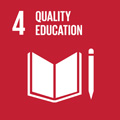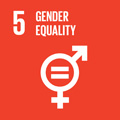- Docente: Sonia Cavicchioli
- Credits: 6
- SSD: L-ART/02
- Language: Italian
- Teaching Mode: Traditional lectures
- Campus: Bologna
-
Corso:
First cycle degree programme (L) in
Humanities (cod. 8850)
Also valid for First cycle degree programme (L) in Foreign Languages and Literature (cod. 0979)
-
from Nov 11, 2024 to Dec 18, 2024
Learning outcomes
At the end of the course students will possess a thorough knowledge of the iconographic themes of modern art history; they will be able to recognise artworks and understand them in the context in which they were prouced: patronage, collections, religious and literary sources; they will be able to compare and connect the works with the poetics in order to recognise the individual style of the artists within a comparative framework considering the various European schools in the modern period.
Course contents
Art in Europe during the Modern Age. Production centers, patronages, artists
The course investigates the arts through topics allowing the analysis and comprehension of main facts from XVth to XIXth century in Europe in a transcultural and synchronic perspective. For this reason the course is divided into four parts, highlighting essential moments of artistic and cultural development, and constantly keeping in mind the relationship between European areas and Italy.
- XVth-Century art in Italy and the Low Countries. The routes of merchants and artists
- Art South and North of the Alps in the Sixteenth Century: The Paths Diverge
- Places and Artists of Baroque Europe: Ancien Régime vs. Merchant and 'Bourgeois' Culture
- The Revival of Ancient Art in Europe between the 18th and the 19th Century
Students with SLD or temporary or permanent disabilities
It is suggested that they get in touch as soon as possible with the relevant University office (https://site.unibo.it/studenti-con-disabilita-e-dsa/en) and with the lecturer in order to seek together the most effective strategies for following the lessons and/or preparing for the examination.
Readings/Bibliography
6 cfu Exam
Attending students
1. Class notes
2. Two (2) book chosen within the List below
N.B. Powerpoint presentations of the classes will be shared with students
Non attending students
1. 5 minutes presentation of a monument or work of art chosen by the student, belonging to European art history (1400-1815 circa)
2. Three (3) books chosen within the List below
9 cfu Exam
(Students of the Laurea in Lingue e Letterature straniere)
Attending students
1. Class notes
2. Three (3) books chosen within the List below
N.B. Powerpoint presentations of the classes will be shared with students
Non attending students
1. 5 minutes presentation of a monument or work of art chosen by the student, belonging to European art history (1400-1815 circa)
2. Four (4) books chosen within the List below
List of books (point 2)
S. Alpers, Arte del descrivere. Scienza e pittura nel Seicento olandese (Chicago, 1983), Torino, Bollati Boringhieri, 1984
S. Alpers, L'officina di Rembrandt: l'atelier e il mercato (Chicago, 1988), Torino, Einaudi, 1990
G.C. Argan, L’Europa delle capitali 1600-1700 (Genève, 1964), Milano, Skira, 2004
L. Barroero, Le arti e i Lumi, Torino, Einaudi, 2011
M. Baxandall, Scultori in legno del Rinascimento tedesco (London, 1980), Torino, Einaudi, 1989
L. Castelfranchi Vegas, Van Eyck, Milano, Jaca Book, 2021
A. Chastel, Architettura e cultura nella Francia del Cinquecento (Paris, 1989), Torino, Einaudi, 1991
D. Frascarelli, L’arte del dissenso. Pittura e libertinismi nell’Italia del Seicento, Torino, Einaudi, 2016
O. Rossi Pinelli, Le arti nel Settecento europeo, Torino, Einaudi, 2009
Roma 1630. Il trionfo del pennello, catalogo della mostra, Milano, Electa, 1994, saggi di G. Briganti, M. Fumaroli, O. Bonfait, S. Ebert-Schifferer, Y. Bonnefoy (pp. 23-126) e, nel catalogo, schede dei dipinti alle pp. 128-227
J. Starobinski, L’invenzione della libertà. 1700-1789 (Génève, 1964), Milano, Abscondita, 2018
Teaching methods
Lectures with powerpoint presentations and multimedia instruments; if possible, on-site inspections and guided visits. Students are encouraged to play and active role within the course, through questions, comments and observations related to the lesson topics.
Assessment methods
The exam will be oral and it will aim to assess whether the students have developed critical skills during the course. Students will be required to demonstrate an appropriate knowledge of the bibliography specified in the syllabus.
1. It will be graded as excellent the performance of those students demonstrating to be able to thoroughly analyse the works of art and the texts, and to put them into an organic view of the topics discussed during the course. The proper use of the specific language during the examination will be also essential.
2. It will be graded as discrete the performance of those students with mostly mnemonic knowledge, no in-depth analysis capabilities and a correct, but not always appropriate, language of the recommended texts.
3. It will be graded as barely sufficient the performance of those students with approximate knowledge, superficial understanding, poor analytical capabilities and a not always appropriate language.
4. It will be graded as insufficient the performance of those students with learning gaps, inappropriate language, no orientation within the recommended bibliography.
Students with SLD or temporary or permanent disabilities
It is necessary to contact the relevant University office (https://site.unibo.it/studenti-con-disabilita-e-dsa/en) with ample time in advance: the office will propose some adjustments, which must in any case be submitted 15 days in advance to the lecturer, who will assess the appropriateness of these in relation to the teaching objectives.
Teaching tools
Power Point presentations provided by the teacher.
Office hours
See the website of Sonia Cavicchioli
SDGs


This teaching activity contributes to the achievement of the Sustainable Development Goals of the UN 2030 Agenda.
